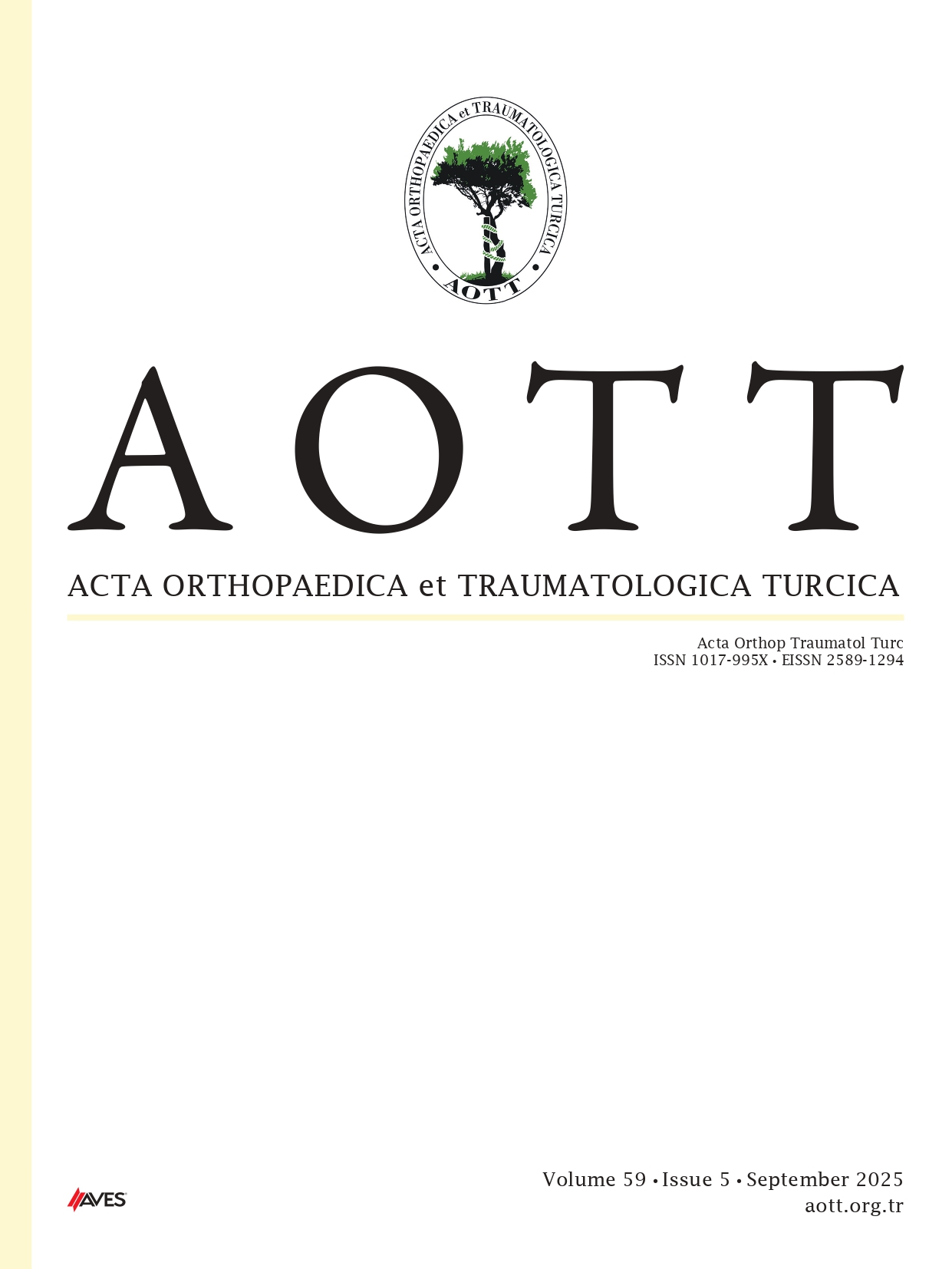Objective: This study aimed to evaluate mid-term outcomes (>52 weeks) of biointegrative implants in foot and ankle surgery by assessing patient-reported outcome measures (PROMs) and comparing them with standard metal implants. Additionally, the study examined radiographic changes in diastasis of the Lisfranc and syndesmosis injuries to determine the e!ectiveness of biointegrative implants for maintaining reduction.
Methods: This retrospective case-control study included 178 patients who underwent midfoot, hindfoot, or ankle syndesmosis surgeries at 3 centers within the same institution (91 cases, 87 controls). Of the 91 patients in the case group, 46 were female and 45 were male. The control group consisted of 43 females and 44 males. The mean age was 42.45 ± 18.89 years in the case group and 42.68 ± 18.32 years in the control group. Cases received biointegrative implants; controls received metal or flexible fixation. Procedures included fixation or fusion of the Lisfranc joint, tarsometatarsal joints, intercuneiform, navicular, cuneiforms, and cuboid; hindfoot arthrodesis; and medial malleolus or syndesmosis fixation. Visual analog scale (VAS) pain scores were recorded at preoperative, early postoperative, and at 3, 6, and 12 months. Patient-reported outcome measure scores (Pain Interference [PIF], Pain Intensity [PI], and Physical Function [PF]) were collected at baseline, early postoperative, and "1-month postoperative. Diastasis and fixation integrity were assessed via radiographs and Computed Tomography. Re-operation and complication data were extracted from patient charts. Repeated-measures ANOVA was used for analysis.
Results: Both groups showed significant reductions in VAS pain scores from preoperative to postoperative time points (P < .001). Further reductions were observed from the first postoperative visit to 3 and 6 months (P < .02), and from 3 to 12 months (P < .01). However, no significant di!erences were found between groups regarding VAS scores (P = .50). PROMIS scores significantly improved over time in both groups (PF: P < .001, PIF: P < .001, PI: P < .001), with no intergroup di!erences (PF: P = .52, PIF: P = .55, PI: P = .37). No di!erence in diastasis measurements was found between groups (P = .214). Hardware failure occurred in 5 cases and 14 controls; 2 surgical site infections were also observed in the control group.
Conclusion: This study is among the first to evaluate mid-term outcomes of biointegrative implants in foot and ankle surgery. Patient-reported outcome measure scores showed significant improvement as early as the early postoperative period. Complication rates were comparable to metal implants. While findings support biointegrative screws as a viable fixation method, long-term and prospective studies are needed to confirm their safety and efficacy.
Level of Evidence: Level III, Therapeutic Study.
Cite this article as: O’Neill C, Mehta A, Bhamidipati A, Hearns S, Ashkani-Esfahani S, Waryasz GR. Outcomes of foot and ankle fixation using biointegrative implants—a retrospective study. Acta Orthop Traumatol Turc., 2025;59(4):191-194.



.png)
.png)
